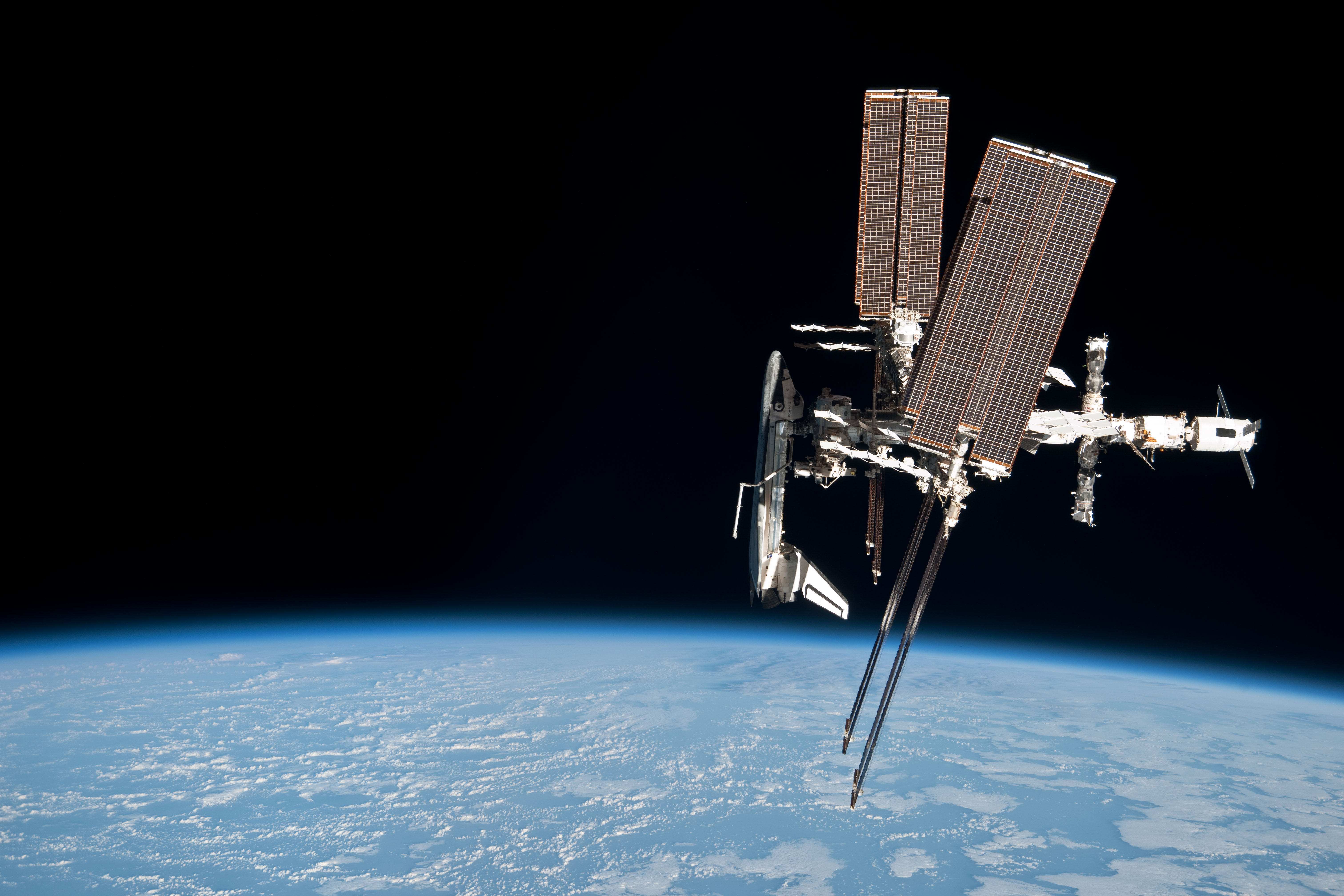As part of the Human Nature series Nature Documentaries would like to draw your attention to the International Space Station. At 350 km (240 miles) above the earth International Space Station is the farthest outpost of humanity.
We humans like to experiment on ourselves. That is how we spread all over the world and even reached most isolated islands in the middle of the Pacific ocean. As we discovered new places We invented new ways to live and reproduce. One of the earliest completely sealed experimental human habitats was the Cousteau’s famous Continental Shelf Station II at 10m depth for 30 days in Red Sea. The undersea colony was the forerunner of other human habitation experiments such as Biosphere2 or Mars500 or NOAA’s exprerimental Aquarius Habitat off the coast of Florida.
ISS is a remarkable achievement of international cooperation of many nations. Three space vehicles -the American space shuttle, the Rusian Soyuz rocket and Proton rocket – were used to deliver more than 100 components in it’s construction. In November 1998 Zarya module was put in orbit as the foundational structure and the rest is history. This full hour detailed tour of the station will undoubtedly be very inspirational to many of us. You can explore more in this interactive NASA website. A much detailed reference guide can be read and downloaded from here.
At 73 meters long weighing 420 tonnes and still growing, ISS has so far estimated to cost $150 billion making it the largest and most expensive Human made object ever built. One of the most interesting experimental structure added to (berthed to the Tranquility node of ISS) is the BEAM (Bigelow Expandable Activity Module) made from layers of cloth containing Vectran and Nomex heralding the possibility of inflatable spaceships. Such ships provide several extremely desirable advantages for space missions. Inflatable modules are lighter requiring less fuel and smaller rockets. They shield radiation more effectively and more resistant to collisions including space debris.
https://en.wikipedia.org/wiki/Genesis_I
https://en.wikipedia.org/wiki/Genesis_II
Highlights from the last Space Shuttle mission (STS-135) by Atlantis that lasted 13 days:
Return from ISS with the Russian Soyuz module is quite adventurous as well. Following video explains the undocking, re-entry and landing sequences in full:
At ~350-400 kilometers altitude, the ISS is above most, but not all, of the Earth’s atmosphere, and tenuous though it is at the Station’s height, some drag is produced as atoms collide with the ISS.
The Station’s orbit decays by a few hundred meters each 24 hours. The decay is variable as solar activity causes changes in the density of the outer atmosphere.
During a period of high solar activity (solar max) the density at any given altitude is higher (there is more energy put into the molecules in the atmosphere, so they spread apart) so at any altitude there were more molecules than there would be otherwise.
Periodic reboosts are thus necessary every few months, usually undertaken by a Progress cargo ship docked to the Russian segment, or a Shuttle Orbiter (now retired) when docked to the ISS. The ESA Jules Verne ATV can also provide a reboost. The Japanese plan for a transfer vehicle as well.
You can watch and receive regular live feed from a number of cameras installed outside of the ISS:
Live streaming video by Ustream
You can also watch NASA TV where occasionally live feed from ISS is broadcasted:



9 Comments